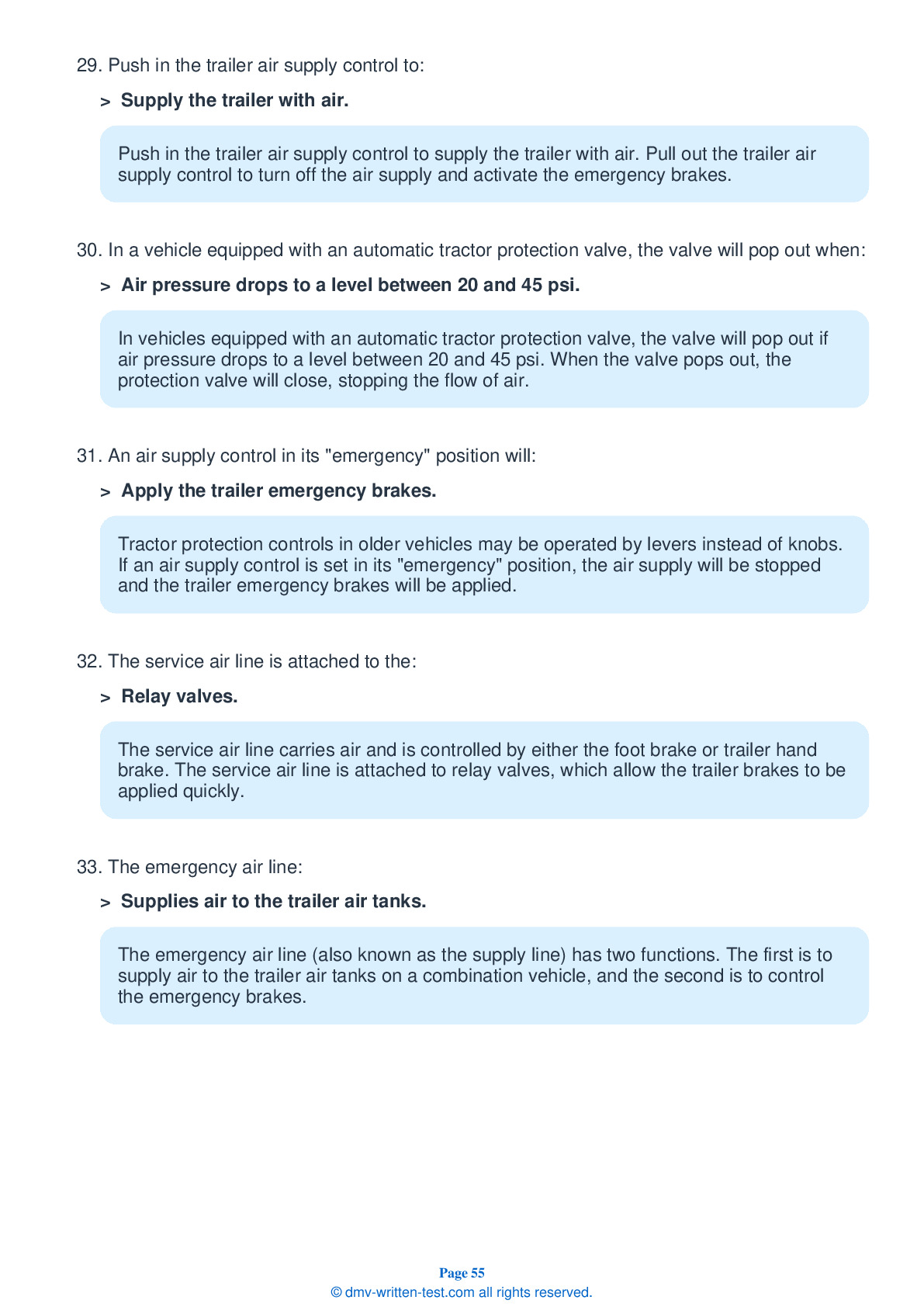Air Brakes
This endorsement is required for driving a vehicle with air brakes. To receive this endorsement, applicants must pass a written test. The test consists of 25 multiple choice questions. Each question has three answer choices. To pass, the applicant must answer at least 20 questions correctly. Test questions come from the Commercial Driver Guide. Questions come from the chapter covering: Air Brakes. The Air Brakes endorsement may be used with the Class A, B or C CDL.
Number of Question
Passing Score
13. What helps prevent wheel lockup when braking?
Explanation
The purpose of an Anti-Lock Braking System (ABS) is to prevent wheel lockup while brakes are being applied.
14. When the spring brakes are on, you should never:
Explanation
Never push down the brake pedal while the spring brakes are activated. The combined force of springs and air pressure could damage the brakes.
15. If air pressure drops to a level between ____, a visual low pressure warning signal should have already activated.
Explanation
A visual low pressure warning signal should activate before air pressure drops to a level between 55 and 75 psi. This signal could be a light, a buzzer, or a wig wag.
16. How much distance will an air brake-equipped vehicle need to come to a complete stop if it is traveling at 55 mph under ideal driving conditions?
Explanation
A vehicle's total stopping distance is made up of perception distance, reaction distance, brake lag distance, and braking distance. With all of these factors included, an air brake-equipped vehicle traveling at a speed of 55 mph under ideal driving conditions will need approximately 450 feet to come to a complete stop.
17. Friction in an S-cam brake is caused when the brake shoes and linings:
Explanation
Friction inside a brake drum is caused when the brake shoes and linings push against the inside of the drum. The friction in the drums will slow and stop the vehicle.
18. When parking, you should not use the parking brake if:
Explanation




